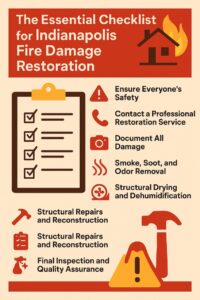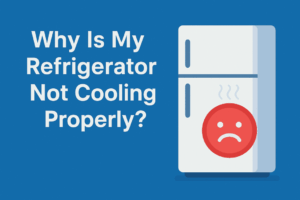Aerial Bundle Cable (ABC) is an overhead power distribution system that replaces traditional bare conductors with insulated bundled cables. Designed for improved safety, reliability, and ease of installation, ABC is widely adopted in urban, suburban, and rural electrification projects around the world.
These cables are suspended between poles, bundled together, and insulated with XLPE (Cross-linked Polyethylene) or HDPE (High-Density Polyethylene) to withstand harsh environmental conditions.
Why Use Aerial Bundle Cable? | Benefits at a Glance
| Feature | Benefits |
|---|---|
| Insulated Conductors | Reduces risk of short circuits and electrical accidents |
| Compact Design | Saves space and simplifies pole setup |
| Low Installation Cost | Minimizes use of insulators and hardware |
| Resistance to Theft | Insulated aluminum reduces the incentive for metal theft |
| Easy Maintenance | Safer and more accessible for linemen during repairs |
| Weather Resistant | Designed to handle wind, rain, snow, and UV exposure |
How Aerial Bundle Cable Works
ABC uses tightly bundled and insulated conductors—usually three-phase plus a neutral and occasionally a streetlight cable—suspended on poles. Unlike bare conductors, the insulated cables prevent arcing, allowing the system to be installed with minimal clearance between lines, poles, and buildings.
These cables often come pre-assembled in the factory, streamlining installation and reducing the chance of field errors.
Key Applications of Aerial Bundle Cable
-
Urban Power Distribution: Reduces clutter and enhances safety in crowded city areas
-
Rural Electrification: Cost-effective, easy-to-install solution for remote villages
-
Temporary Power Installations: Ideal for construction sites and emergency relief camps
-
Street Lighting Circuits: Integrated conductors simplify lighting system deployment
-
Industrial Premises: Suitable for internal or external power distribution networks
Types of Aerial Bundle Cable
| Type | Description | Use Case |
|---|---|---|
| Low Voltage ABC | Up to 1kV | Residential & commercial power delivery |
| Medium Voltage ABC | 1kV – 33kV | Utilities and industrial networks |
| Service Drop Cables | For connection from pole to end-user | Last-mile distribution |
Common Conductors:
-
Aluminum (most popular for cost-efficiency and corrosion resistance)
-
Alloy Aluminum (enhanced strength and durability)
Technical Specifications (Low Voltage ABC)
| Parameter | Value |
|---|---|
| Voltage Rating | 0.6/1kV |
| Insulation | XLPE or HDPE |
| Conductor Type | Stranded Aluminum or AAAC |
| Operating Temperature | -40°C to +90°C |
| Short-Circuit Temperature | Up to 250°C |
| UV Resistance | High (suitable for tropical zones) |
Installation Best Practices
✔ Maintain Proper Sag & Tension
✔ Use Proper Pole Height & Bracing
✔ Ensure Correct Clamping & Anchoring
✔ Observe Clearance Regulations (Buildings, Trees, Roads)
✔ Use Approved Connectors & Accessories
✔ Conduct Pre-energization Inspection
Aerial Bundle Cable vs Bare Overhead Conductors
| Factor | Aerial Bundle Cable | Bare Overhead Conductor |
|---|---|---|
| Safety | High – insulated | Low – exposed |
| Installation Cost | Moderate | Low, but requires more hardware |
| Maintenance | Easier, safer | Complex and risky |
| Energy Loss | Slightly higher due to insulation | Lower, but riskier |
| Aesthetic Appeal | Better in urban areas | Less organized |
| Vandalism/Theft | Low risk | High risk (copper theft) |
SEO-Optimized Semantic Keywords
-
Overhead power distribution
-
Insulated power cables
-
Utility pole cable systems
-
XLPE insulated cable
-
Urban electrification solutions
-
Service drop aerial cable
-
ABC cable installation standards
-
Energy-efficient cable systems
-
Power grid modernization
-
Electrical distribution infrastructure
Frequently Asked Questions (FAQs)
Q1: What makes Aerial Bundle Cable safer than traditional cables?
A: The insulation around each conductor prevents accidental contact, minimizes short circuits, and protects from environmental damage.
Q2: Can ABC be used for high-voltage transmission?
A: ABC is typically designed for low to medium voltage (up to 33kV). For high-voltage applications, bare conductors or underground cables are more suitable.
Q3: Is ABC suitable for regions with extreme weather?
A: Yes, ABC is designed to be UV, heat, moisture, and corrosion-resistant, making it ideal for both tropical and cold climates.
Q4: How long does ABC last?
A: With proper installation and regular inspection, the lifespan of ABC can exceed 30 years.
Q5: Are there international standards for ABC?
A: Yes. Most ABC cables conform to IEC 60502, NFC 33-209, and IS 14255 standards, ensuring global compatibility and safety compliance.
Real-World Example: ABC in Rural Electrification
In rural areas of South Asia and Africa, electrification using ABC has transformed energy access. Governments and NGOs favor this solution due to:
-
Faster Deployment Times
-
Reduced Theft of Conductors
-
Lower Maintenance Costs
-
Minimal Land Disruption
Local linemen report up to 60% reduction in service disruptions compared to older bare conductor networks.
How to Choose the Right Aerial Bundle Cable?
Consider the Following Factors:
-
Voltage Requirement: Low vs Medium Voltage
-
Environment: Coastal, desert, or urban zones
-
Span Length Between Poles: Affects tension and sag
-
Load Demand: Number of homes, commercial units, or streetlights
-
National Standards: Align with local regulations and utility guidelines
Call to Action (CTA)
🔧 Planning a power distribution upgrade?
Choose Aerial Bundle Cable for safety, reliability, and efficiency. Whether you’re working on a rural electrification project, commercial expansion, or city infrastructure upgrade—ABC offers a modern, secure, and cost-effective solution.
💡 Consult with a certified supplier or electrical engineer to match the right ABC specification for your project needs.
📈 Enhance your network reliability today with advanced aerial cable solutions.









